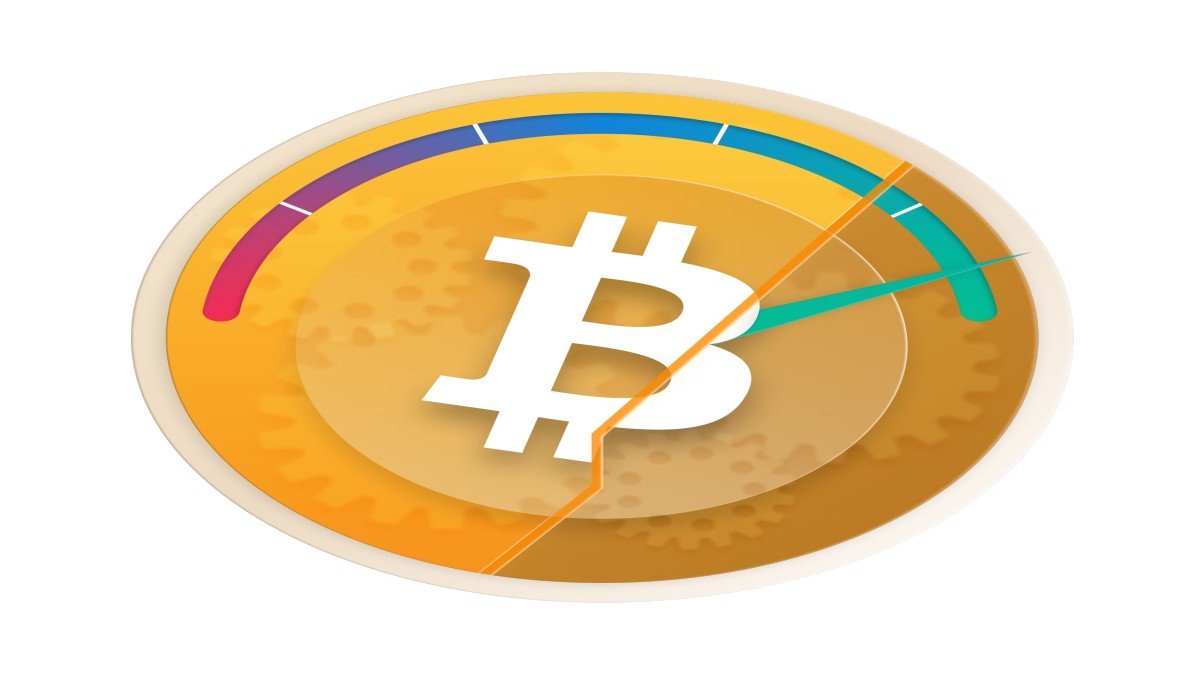
Bitcoin’s Economy: Analyzing the Emerging Digital Financial System
The advent of Bitcoin has sparked a revolutionary shift in the global economy, giving rise to a new economic paradigm that transcends traditional financial systems. As the first decentralized cryptocurrency, Bitcoin has introduced an entirely new form of digital money, one that operates without reliance on central banks or government authorities. Its economy is based on a unique set of principles, including decentralization, scarcity, transparency, and security. These features are reshaping not only how people perceive money, but also how value is exchanged, stored, and transferred across borders.
In this article, we will delve into Bitcoin’s economy, examining the key components that define its structure, the driving forces behind its growth, and the implications it has for the global financial system.
1. The Foundation of Bitcoin’s Economy: Decentralization and Blockchain Technology
At the core of Bitcoin’s economy lies the blockchain technology. The blockchain is a decentralized digital ledger that records all Bitcoin transactions in a secure, transparent, and immutable way. Each “block” in the blockchain contains a group of verified transactions, and these blocks are linked together in a chronological chain. The blockchain operates on a network of computers, or nodes, which work together to validate transactions and ensure the integrity of the network.
The decentralization aspect is crucial because it removes the need for central authorities such as banks, governments, or financial institutions to validate or control transactions. Instead, Bitcoin relies on a distributed consensus mechanism known as proof-of-work (PoW). In PoW, miners compete to solve complex mathematical puzzles, and the first miner to solve the puzzle gets to add a new block to the blockchain and is rewarded with newly minted Bitcoin.
This decentralization gives Bitcoin its independence from traditional financial systems. Transactions are conducted directly between participants (peer-to-peer), with no intermediary. This eliminates the need for trusted third parties and reduces the costs, delays, and vulnerabilities associated with centralized systems.
2. Bitcoin as a Digital Asset: Store of Value and Medium of Exchange
Bitcoin’s economy operates around two key functions: store of value and medium of exchange.
A. Store of Value: Digital Gold
Bitcoin is often referred to as “digital gold” because, much like gold, it has the qualities of a reliable store of value. Bitcoin is designed to have a finite supply of 21 million coins, which makes it immune to inflationary pressures that typically affect traditional fiat currencies. The supply of new Bitcoin is gradually reduced through a process called halving, which happens approximately every four years, cutting the reward that miners receive for verifying transactions in half. This ensures that the total number of Bitcoin in circulation will never exceed 21 million.
Due to its scarcity, Bitcoin has become an attractive asset for investors seeking a hedge against inflation and economic instability. Central banks’ money-printing policies, especially in the wake of the COVID-19 pandemic, have led many individuals and institutions to look for alternative assets that are less susceptible to inflationary devaluation. Bitcoin’s limited supply and decentralized nature make it a perfect alternative to traditional fiat currencies, which can be subject to government manipulation and quantitative easing.
Additionally, Bitcoin’s security, provided by the cryptographic proof-of-work mechanism, ensures that its value cannot be tampered with. Once a transaction is recorded on the blockchain, it becomes immutable, making it nearly impossible to alter or counterfeit. This inherent security and scarcity have led to increasing adoption by investors who view Bitcoin as a long-term store of value.
B. Medium of Exchange: Facilitating Peer-to-Peer Transactions
While Bitcoin is increasingly recognized as a store of value, its ability to function as a medium of exchange has been somewhat limited by its scalability issues. Bitcoin transactions can take several minutes to confirm, and the network can process only a limited number of transactions per second (about 7). This is far slower than traditional payment systems like Visa or Mastercard, which can handle thousands of transactions per second.
However, Bitcoin’s potential as a medium of exchange is growing. New technologies, such as the Lightning Network, are being developed to enhance Bitcoin’s scalability and transaction speed. The Lightning Network allows users to make off-chain transactions that are faster and cheaper than regular on-chain transactions. As the Lightning Network and other solutions mature, Bitcoin’s utility as a medium of exchange will likely increase, enabling it to compete more directly with traditional payment systems.
In addition, Bitcoin is increasingly being accepted as a form of payment by merchants and businesses around the world. Companies like Overstock, Newegg, and Shopify allow customers to pay for goods and services using Bitcoin, further legitimizing it as a medium of exchange. Bitcoin’s borderless nature makes it particularly attractive for international transactions, as it eliminates the need for currency conversions and the fees associated with cross-border transfers.
3. Bitcoin’s Role in the Global Economy: Financial Inclusion and Sovereignty
Bitcoin’s decentralized nature and its ability to facilitate cross-border transactions without relying on banks have the potential to revolutionize financial inclusion and provide financial sovereignty to individuals in underserved or economically unstable regions.
A. Financial Inclusion
A significant portion of the global population remains unbanked or underbanked, meaning they do not have access to traditional banking services or financial infrastructure. According to the World Bank, around 1.7 billion people worldwide lack access to a bank account, particularly in developing countries. For these individuals, Bitcoin offers an alternative to traditional banking, enabling them to store and transfer value through their smartphones without relying on centralized institutions.
In countries with hyperinflation or unstable currencies, Bitcoin has become a lifeline for many individuals who seek to preserve their wealth. For example, in countries like Venezuela and Zimbabwe, where hyperinflation has rendered national currencies almost worthless, Bitcoin offers a stable store of value and a means of transacting without the need for an unstable local currency.
Bitcoin’s open-source nature and accessibility mean that anyone with an internet connection can participate in its economy, regardless of location or socioeconomic status. This opens the door to financial inclusion for millions of people who have been excluded from traditional financial systems.
B. Financial Sovereignty
Bitcoin also offers financial sovereignty to individuals, allowing them to take control of their own wealth without relying on intermediaries like banks, payment processors, or governments. Since Bitcoin operates on a peer-to-peer network and is secured through cryptography, users can send and receive payments directly without needing a third party to validate the transaction.
This sovereignty is especially valuable in countries with authoritarian regimes or unstable political environments, where governments can seize assets or restrict access to financial services. Bitcoin provides an avenue for individuals to protect their wealth from potential government intervention or capital controls, offering a way to transact freely and privately.
4. Bitcoin’s Impact on Traditional Financial Systems
Bitcoin’s economy has profound implications for traditional financial systems and institutions. As Bitcoin continues to grow, it challenges the conventional banking model, which is based on centralized control, intermediaries, and fractional reserve banking. Some of the key ways Bitcoin is impacting traditional finance include:
A. Decentralized Finance (DeFi)
Bitcoin is a key player in the broader decentralized finance (DeFi) ecosystem. While other cryptocurrencies like Ethereum have taken the lead in building decentralized financial applications, Bitcoin’s role in DeFi is becoming increasingly important. Bitcoin-backed DeFi products, such as wrapped Bitcoin (WBTC), allow Bitcoin holders to participate in lending, borrowing, and other DeFi services without needing to convert their Bitcoin into another asset.
Bitcoin’s role in DeFi could eventually lead to more financial services being decentralized, removing intermediaries and reducing costs. This could disrupt traditional banking models and give users more control over their financial lives.
B. Central Bank Digital Currencies (CBDCs)
The rise of Bitcoin and other cryptocurrencies has prompted central banks around the world to explore the idea of central bank digital currencies (CBDCs). A CBDC is a digital form of a country’s fiat currency, issued and controlled by the central bank. Bitcoin’s decentralized nature has sparked interest in the potential for digital currencies that are not reliant on traditional banking systems.
While Bitcoin is often seen as an alternative to fiat currencies, CBDCs may be a response by governments to the growing popularity of digital assets. Some experts argue that Bitcoin could act as a model for the design of CBDCs, offering lessons in security, transparency, and decentralization.
: The Future of Bitcoin’s Economy
Bitcoin’s economy is still in its early stages, but it has already proven to be a disruptive force that is reshaping the financial landscape. As Bitcoin continues to evolve, its impact on traditional financial systems will become more pronounced, with significant implications for investment, financial inclusion, and the global economy.
Bitcoin’s growing adoption as a store of value, medium of exchange, and hedge against inflation is positioning it as a key asset in the digital age. As scalability solutions like the Lightning Network improve, Bitcoin’s potential as a global payment system will increase, further challenging traditional financial infrastructure.
In the long term, Bitcoin has the potential to serve as a foundational building block of the emerging decentralized economy, offering greater financial sovereignty, privacy, and inclusion to individuals worldwide. However, its future will depend on technological advancements, regulatory developments, and broader societal acceptance.
As Bitcoin continues to mature, it will likely play a pivotal role in the transition from traditional finance to a more decentralized, digital economy.



